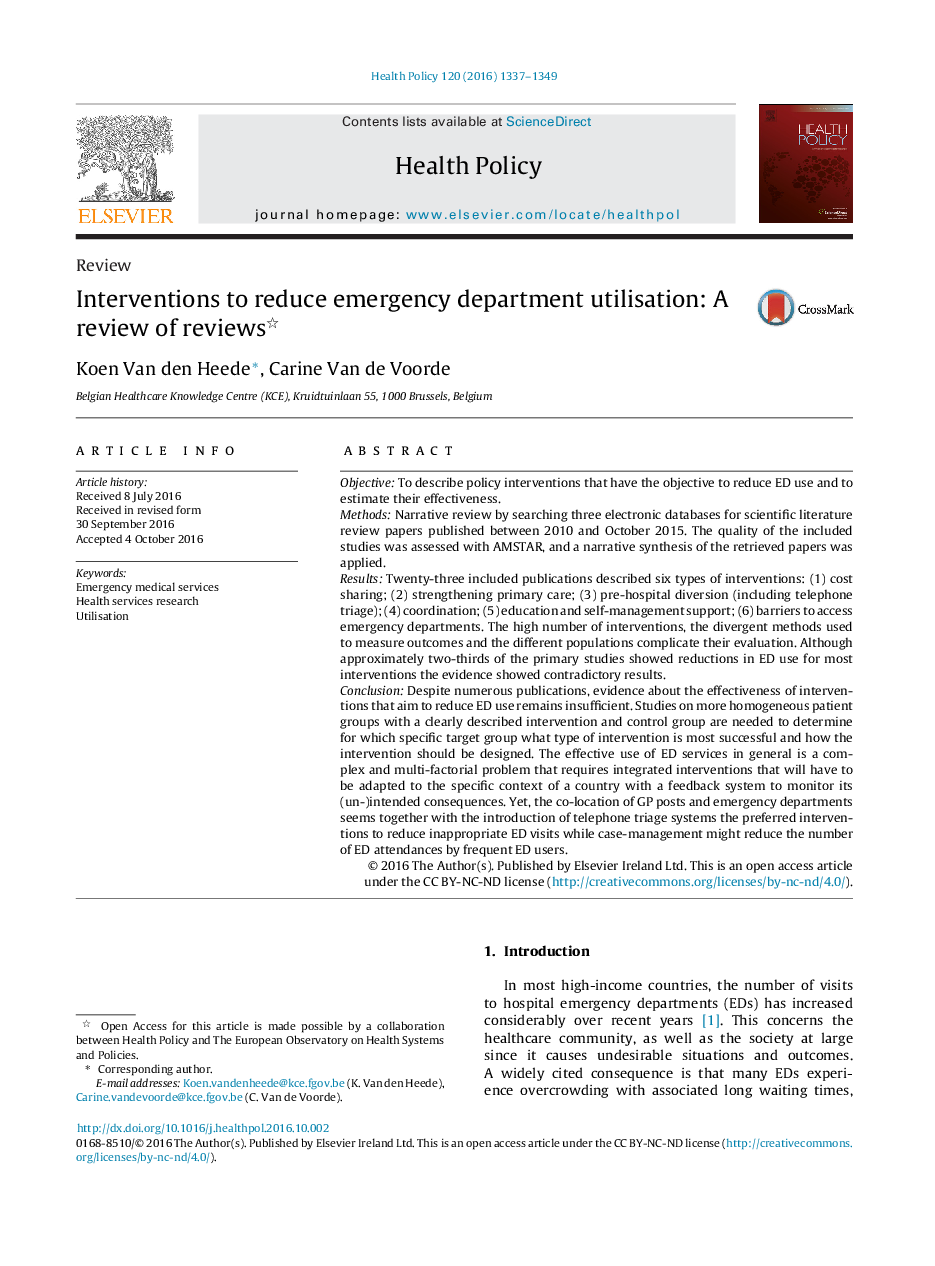| Article ID | Journal | Published Year | Pages | File Type |
|---|---|---|---|---|
| 6238876 | Health Policy | 2016 | 13 Pages |
â¢In most high-income countries there is an ever-increasing rise in ED visits.â¢A variety of organisational interventions are used to curb this trend.â¢The literature review did not revealed silver bullets.â¢A multi-faceted approach adopted to the national and local context seems indicated.
ObjectiveTo describe policy interventions that have the objective to reduce ED use and to estimate their effectiveness.MethodsNarrative review by searching three electronic databases for scientific literature review papers published between 2010 and October 2015. The quality of the included studies was assessed with AMSTAR, and a narrative synthesis of the retrieved papers was applied.ResultsTwenty-three included publications described six types of interventions: (1) cost sharing; (2) strengthening primary care; (3) pre-hospital diversion (including telephone triage); (4) coordination; (5) education and self-management support; (6) barriers to access emergency departments. The high number of interventions, the divergent methods used to measure outcomes and the different populations complicate their evaluation. Although approximately two-thirds of the primary studies showed reductions in ED use for most interventions the evidence showed contradictory results.ConclusionDespite numerous publications, evidence about the effectiveness of interventions that aim to reduce ED use remains insufficient. Studies on more homogeneous patient groups with a clearly described intervention and control group are needed to determine for which specific target group what type of intervention is most successful and how the intervention should be designed. The effective use of ED services in general is a complex and multi-factorial problem that requires integrated interventions that will have to be adapted to the specific context of a country with a feedback system to monitor its (un-)intended consequences. Yet, the co-location of GP posts and emergency departments seems together with the introduction of telephone triage systems the preferred interventions to reduce inappropriate ED visits while case-management might reduce the number of ED attendances by frequent ED users.
